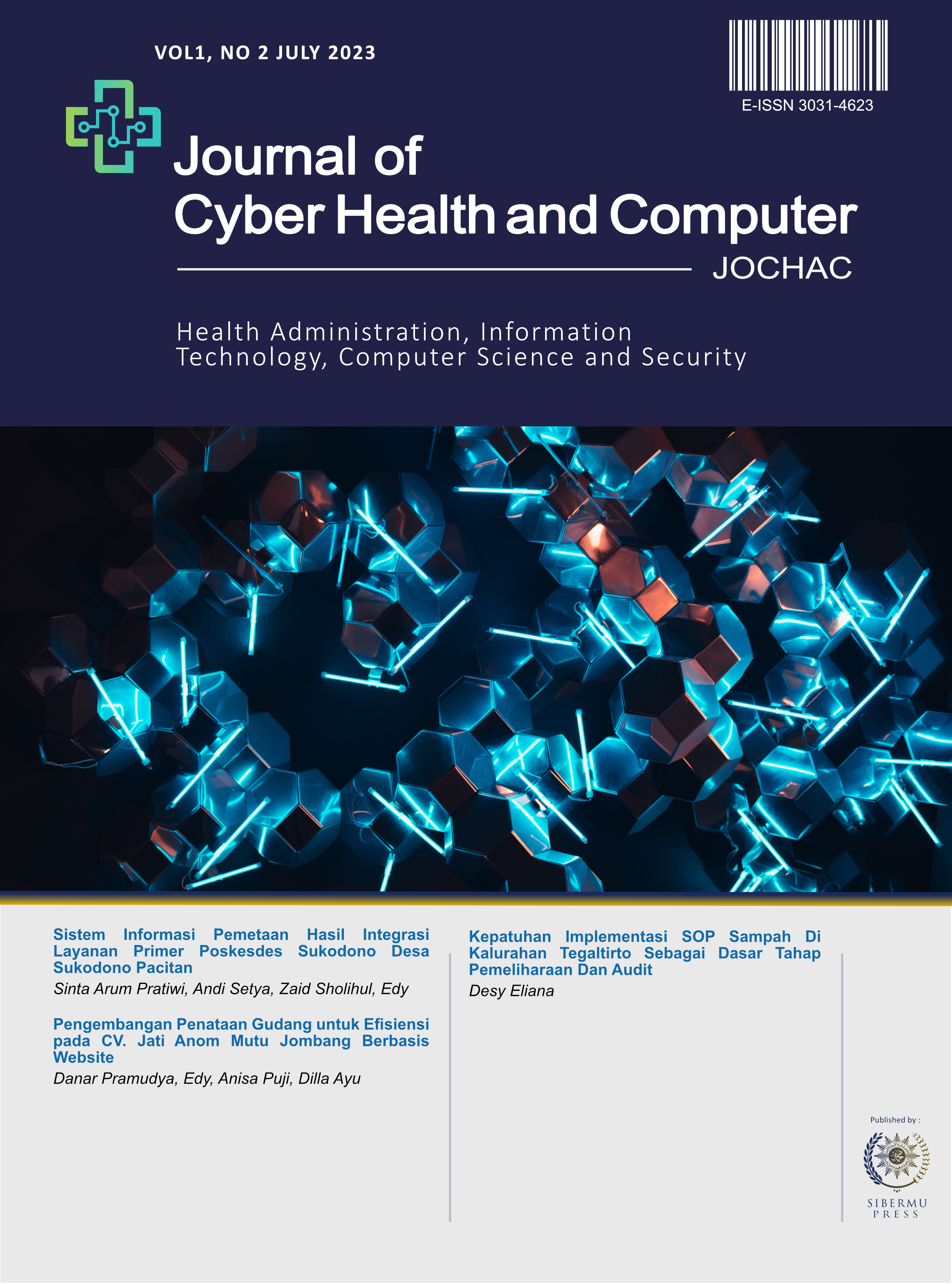Waste Bank Utilization Analysis of Inorganic Waste Management Potential in The City of Yogyakarta
DOI:
https://doi.org/10.64163/jochac.v2i2.28Keywords:
MSWM, Waste Bank, Recycling Business, GIS, BMCAbstract
Waste is a by-product resulting from various activities carried out by living beings, especially by humans, which can be pollutes soil, water bodies, and air if not well managed. The government's efforts to increase the role of the community in waste management are reflected in the issuance of the Governor of the Special Region of Yogyakarta number 21 of 2014 concerning Guidelines for Waste Handling, Business Licensing of Waste Management, and Environmental Compensation which was then responded by the Mayor of Yogyakarta City through Mayor Regulation number 67 of 2018 concerning Policies and Strategy of Yogyakarta City in the Management of Household Waste and Household-Like Waste so that a waste bank managed by the community was born.
However, the increase in the number of waste banks is not in line with the increase in the amount of managed waste each year. Therefore, an approach is needed to create a strategy in order to enhance waste banks performace in managing waste. Utilization of geographic information systems is used to locate waste potential and find strategic points for waste management based on the amount of generation, customer activity, and waste collection trends. Next, a waste management business is modeled using BMC whose feasibility is analyzed using the CAPEX and OPEX methods. Based on the research results, recycled paper production is the most potential business to be run by the community. A recycled paper business with a capacity of 30 kg per day has the potential to increase the recycling rate of paper waste in Yogyakarta City by 0.03 percent (7.2 tons) annually
References
Bafdal, Nurpilihan. Amaru, Kharistya. Pareira P., Boy Macklin. 2011. Buku Ajar Sistem Informasi Geografis. Bandung: Jurusan Teknik dan Manajemen Industri Pertanian, Fakultas Teknologi Industri Pertanian, Universitas Padjadjaran.
ESRI. 2016. Comparing Interpolation Methods. Environmental System Research Institute. https://desktop.arcgis.com/en/arcmap/10.3/tools/spatial-analyst-toolbox/comparing-interpolation-methods.htm diakses pada tanggal 5 Juli 2021.
ESRI. 2016. Data Classification Methods. Environmental System Research Institute. https://pro.arcgis.com/en/pro-app/latest/help/mapping/layer-properties/data-classification-methods.htm diakses pada tanggal 5 Juli 2021.
ESRI. 2016. Understanding Interpolation Analysis. Environmental System Research Institute. https://desktop.arcgis.com/en/arcmap/10.3/tools/spatial-analyst-toolbox/understanding-interpolation-analysis.htm diakses pada tanggal 5 Juli 2021.
ESRI. 2016. Understanding Reclassification. Environmental System Research Institute. https://desktop.arcgis.com/en/arcmap/10.3/tools/spatial-analyst-toolbox/understanding-reclassification.htm diakses pada tanggal 5 Juli 2021.
ESRI. 2016. Union. Environmental System Research Institute. https://desktop.arcgis.com/en/arcmap/10.3/tools/analysis-toolbox/union.htm diakses pada tanggal 16 November 2021.
Kementrian Lingkungan Hidup dan Kehutanan Republik Indonesia. 2019. Komposisi Sampah Kota Yogyakarta. Sistem Informasi Pengelolaan Sampah Nasional. http://sipsn.menlhk.go.id/ diakses pada tanggal 12 Juni 2020.
Nazir, M. 2003. Metode Penelitian. Jakarta: Ghalia Indonesia.
Putranto, T. W. C., Hezim, F., Citrasari, N., Santoso, S. B. 2019. The Mapping of Active Waste Banks Based on Geographic Information System (GIS) as an Effort for Waste Management in Surabaya City. IOP Conf. Series: Earth and Environmental Science 245. IOP Publishing
Yano, Masayuki. Penn, James Douglass., Konidaris, George. Patera, Anthony T. 2013. Math, Numerics, & Programming for Mechanical Engineers. Massachusetts Institute of Technology, Amerika Serikat.
Downloads
Published
How to Cite
Issue
Section
License
Copyright (c) 2024 Journal of Cyber Health and Computer

This work is licensed under a Creative Commons Attribution 4.0 International License.








